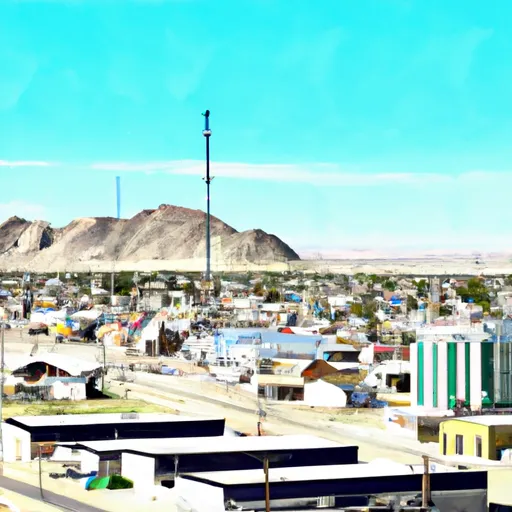-
 Snoflo Premium
Snoflo Premium
Get unlimited access to all our content
With no Ad interruptions! - Start Your Free Trial Login with existing account
Tonopah
Eden Index
Climate
7.9
•
Recreation
•
Community
•
Safeguard
3.2/10

Tonopah, Nevada is a small town nestled in the scenic desert region of Nye County. The climate in Tonopah is characterized by hot summers and cold winters. Summers can reach high temperatures of around 90°F (32°C), while winter temperatures drop to an average low of 20°F (-6°C). The town experiences limited rainfall throughout the year.
Tonopah's hydrology is primarily influenced by the nearby Tonopah Basin, which includes several springs and water sources. These hydrological constituents provide essential water resources for the town and surrounding areas. Additionally, the region is known for its mining history and contains numerous abandoned mines that contribute to the local hydrological system.
Outdoor enthusiasts will find plenty of recreational opportunities in Tonopah. The vast desert landscape offers opportunities for hiking and exploring the nearby Toiyabe National Forest. Visitors can also enjoy camping, fishing, and wildlife viewing in the area's lakes and reservoirs. Tonopah is also known for stargazing due to its remote location and clear skies, making it an ideal destination for astronomy enthusiasts. With its unique climate, hydrology, and outdoor recreation, Tonopah offers a memorable experience for nature lovers.
What is the Eden Index?
The Snoflo Eden Index serves as a comprehensive rating system for regions, evaluating their desirability through a holistic assessment of climate health, outdoor recreation opportunities, and natural disaster risk, acknowledging the profound impact of these factors on livability and well-being.
Climate Health Indicator (CHI): 7.9
Tonopah receives approximately
202mm of rain per year,
with humidity levels near 77%
and air temperatures averaging around
10°C.
Tonopah has a plant hardyness factor of
7, meaning
plants and agriculture in this region tend to thrive during the non-winter months.
By considering the ideal temperature range, reliable water supplies, clean air, and stable seasonal rain or snowpacks, the Climate Health Indicator (CHI) underscores the significance of a healthy climate as the foundation for quality living.
A healthy climate is paramount for ensuring a high quality of life and livability in a region, fostering both physical well-being and environmental harmony. This can be characterized by ideal temperatures, reliable access to water supplies, clean air, and consistent seasonal rain or snowpacks.
Weather Forecast
Streamflow Conditions
Central Nevada Desert Basins
Area Rivers
Central Nevada Desert Basins
Snowpack Depths
Central Nevada Desert Basins
Reservoir Storage Capacity
Central Nevada Desert Basins
Groundwater Levels
Recreational Opportunity Index (ROI):
The Recreational Opportunity Index (ROI) recognizes the value of outdoor recreational options, such as parks, hiking trails, camping sites, and fishing spots, while acknowledging that climate plays a pivotal role in ensuring the comfort and consistency of these experiences.
Access to outdoor recreational opportunities, encompassing activities such as parks, hiking, camping, and fishing, is crucial for overall well-being, and the climate plays a pivotal role in enabling and enhancing these experiences, ensuring that individuals can engage in nature-based activities comfortably and consistently.
Nearby Ski Areas
Catastrophe Safeguard Index (CSI):
The Catastrophe Safeguard Index (CSI) recognizes that natural disaster risk, encompassing floods, fires, hurricanes, and tornadoes, can drastically affect safety and the overall appeal of an area.
The level of natural disaster risk in a region significantly affects safety and the overall livability, with climate change amplifying these risks by potentially increasing the frequency and intensity of events like floods, fires, hurricanes, and tornadoes, thereby posing substantial challenges to community resilience and well-being.
Community Resilience Indicator (CRI):
The Community Resilience Indicator (CRI) recognizes that education, healthcare, and socioeconomics are crucial to the well-being of a region. The CRI acknowledges the profound impact of these elements on residents' overall quality of life. By evaluating educational resources, healthcare accessibility, and economic inclusivity, the index captures the essential aspects that contribute to a thriving community, fostering resident satisfaction, equity, and social cohesion.

